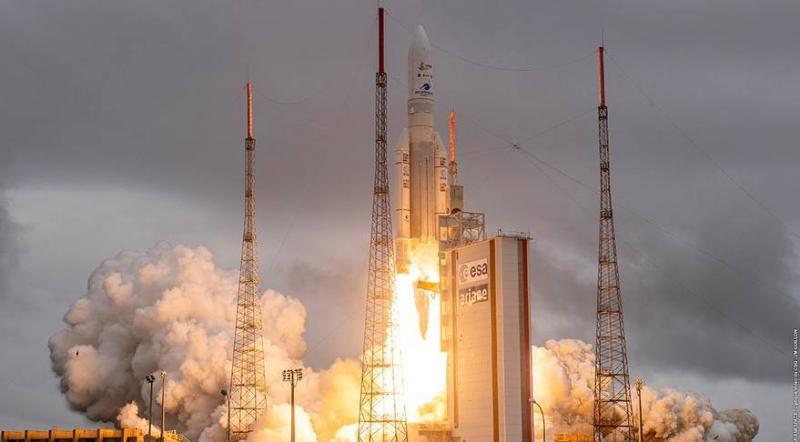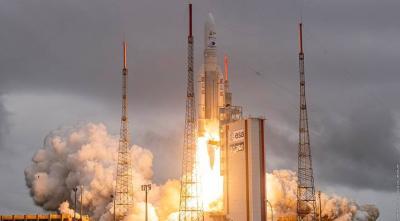The "Ariane 5" rocket successfully completed its mission by placing the French-made "James Webb" telescope, which aims to provide an initial glimpse of the universe as it was during the time the oldest galaxies are believed to have formed. NASA hailed the telescope as the leading observatory for space science in the next decade.
On Saturday, the "Ariane 5" rocket successfully placed the "James Webb" space telescope into its final orbit path, which it will reach in about a month, as announced by the launch operations director at the French Guiana space center. Jean-Luc Boisjean from the control room at the Kourou spaceport stated, "The Webb telescope has successfully detached; onward Webb."
The upper stage of the "Ariane" rocket separated 27 minutes after launching the telescope, which will take nearly a month to reach its designated position 1.5 million kilometers from Earth. This telescope is intended to provide humanity with a preliminary view of the universe as it existed when the oldest galaxies are believed to have formed. It operates in infrared wavelengths and costs nine billion dollars.
It was launched at 7:20 AM Eastern Time (12:20 PM GMT) from the European Space Agency's launch site in French Guiana. Over the next month, the telescope will head to its destination in an orbit around the sun, approximately one million miles from Earth, or four times the distance to the moon. This unique trajectory will keep the telescope aligned with Earth as both the planet and the telescope orbit the sun together.
The telescope is named "James Webb" after NASA's administrator during most of the agency's formation in the 1960s, and it is approximately 100 times more sensitive than its predecessor, the "Hubble" telescope. It is expected to transform scientists' understanding of the universe and our place within it.




